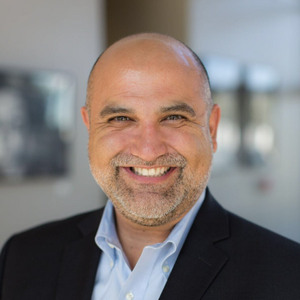The following post is part one of a new series examining how Taylor Swift's shrewd business strategies contributed to her massive success.
It even has a name — the Taylor Swift Effect. Or, if you prefer, the Swiftie Effect or Swiftonomics.
The phenomenal impact of Taylor Swift on both culture and business has been chronicled in seemingly every news and entertainment source in the world. And with good reason — the numbers are truly staggering:
Her 2023 “Eras” tour was the first tour to record a billion dollars in gross ticket sales. That doesn’t include merchandise sales or the box office for the Eras film, which together total another half-billion.
The U.S. Travel Association estimated that the tour’s total impact “likely exceeded $10 billion.”
Bank of America estimates that the opening night of her concert in Glendale, Arizona created roughly the same revenue for local businesses as Super Bowl LVII, which was held in the same stadium earlier in 2023.
According to Eric Smallwood, president of Apex Marketing Group, Swift generated $331.5 million in equivalent brand value, or EBV, for boyfriend Travis Kelce's football team and the NFL as of January 2024.
According to Forbes, Swift is now a billionaire, the first musician to reach that milestone solely from songwriting and performing.
It might be tempting to dismiss this as nothing more than an outsized pop phenomenon, an inoffensive and appealing distraction for a country still in post-Covid blues and anxious over political upheaval. Taylor and her music are nice and fun and relatable. That’s all it is, right?
.jpg)
Dr. Jake Aguas — author, speaker, generational expert and Crowell Associate Professor of Management — says there’s a lot more going on than that. What Swift has pulled off is nothing short of entrepreneurial genius.
Aguas, author of Megatrends: The Transformative Forces Reshaping the United States and Generation Z and the COVID-19 Crisis, was invited to UC Berkeley last spring to lecture in their course on “Artistry and Entrepreneurship: Taylor’s Version.” For Aguas, one key to Swift’s success is her awareness of generation differences and how she appeals to multiple generations in unique and intentional ways without alienating anyone (other than an ex-boyfriend or two).
Two caveats before we begin. First, what is a generation? Aguas defines it as a group of individuals born within the same narrow span of years, located in the same sphere of influence — physical and virtual — and experiencing the same events, environments and sociocultural situations during formative and critical developmental stages of their lives, matching a basic phase of life.
Second, this is not to say that Swift’s success is purely a product of her marketing, not her music. But (a) the history of pop music is full of stories of failed artists whose work is found and appreciated only years later, and (b) we’re not music critics. But Aguas believes that there is much to be learned about marketing from Swift’s meteoric rise.
Taylor and Boomers (born 1946–1964)
The Boomer generation is often associated with a strong work ethic, self-discipline and a “living to work” mindset, and Swift’s autobiographical songs often refer to the fact that her “overnight success” was the culmination of a 20-year career of relentless hard work and sacrifice. She gladly seeks definitions of success that Boomers recognize and can relate to (she was named Time Magazine’s “Artist of the Decade”) and, when other artists spurned Facebook as passé, she remained involved and gathered 80 million followers. Musically, Aguas finds that Swift appeals to the same accessible singer-songwriter-storyteller model that flourished in the 60s and 70s — she was named for James Taylor, after all — and while her personal life is certainly complicated, she has remained remarkably scandal-free.
Taylor and Generation X (born 1965–1980)
To a generation seeking work-life balance, with a growing skepticism of institutions and authority and an increased sense of autonomy — due to the confluence of a high Boomer parent divorce rate and “latch-key kid” upbringing — Swift’s appearance of being in control of her own life and career is very appealing.
Swift was also one of the first artists to effectively utilize low-cost digital and viral marketing, recognizing that, if her stuff was good, a hundred fans spreading the word could become a thousand, and then ten thousand, and then a hundred thousand, and it would cost next to nothing — ads in Rolling Stone and billboards and TV spots were unnecessary. Her story-oriented songs were a perfect fit for music videos, and her sound easily crossed over from the country music of her debut to the mainstream pop she became most known for. But that is not her only crossover — to the Gen X parents of Swift’s Millennial fans, her music became something they could share, and Swift herself became a way for parents to see and understand their children’s desires and concerns.
Taylor and Millennials (born 1981–1995)
Millennials are said to emphasize significance, meaning and purpose, further tipping the work-life scales toward “life” and away from affluence. They are more interested in collaborative teamwork rather than solo projects that might gain them more acclaim and reward. They value honesty and transparency and have a unique radar for hypocrisy — one explanation for their interest in DEI (diversity, equality and inclusion).
Conversely, some researchers say this generation experienced “lawn-mower” parenting. An evolution of “helicopter parenting” where parents were always hovering nearby, “lawn-mower parenting” brought parents down to ground level, where they regularly interceded in their children’s lives to minimize frustration, failure, pain and strife.
Swift herself is a Millennial (born in 1989) and gives Millennials someone to directly sympathize with as she has experienced life and major cultural events with them. But again, rather than being divisive, she seems more interested in finding commonalities and building bridges. Her concept of an “Eras” tour — structuring her show chronologically through her 20-year career — was a way to talk to each specific generational group without excluding any one cohort. The demographic statistics from that record-breaking tour are interesting:
58% of attendees were ages 35-64 (Millennials, Gen X, Boomers)
37% were ages 18-34 (Millennials, older Gen Z)
Swift’s crossover to pro football audiences was no less fascinating. Forbes reported,
As Eve Weston, professor of immersive storytelling at Los Angeles Film School puts it, “When men watch football, there are characters — the players — and there is a story — the game. Essentially, it’s a war story.”
But Swifties are all about the love story — ever since her hit single by that name. So, when their favorite character shows up on ESPN as the Juliet to (football player Travis) Kelce’s Romeo, Swifties are primed to tune in.
Read part two of the series: The Taylor Swift Effect: Lessons for Entrepreneurs
 Biola University
Biola University.jpg)



.jpg)

